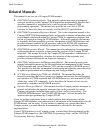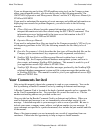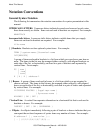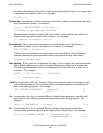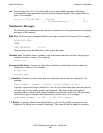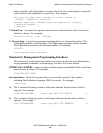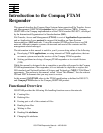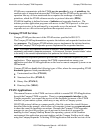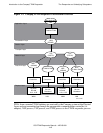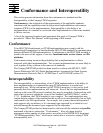
Introduction to the Compaq FTAM Responder
OSI/FTAM Responder Manual—425199-001
1-3
FTAM Applications
responder, you use the standard FTAM file-handling conventions to perform remote file-
handling tasks, by means of the FTAM interface on your remote system.
Each FTAM service, or file operation, requires that multiple FTAM protocol operations
be performed, in sequence, to complete the service. For example, to open a file, an
FTAM application must first send an initialize request, and then a file-select request and
a file-open request, to the responding system in the communication. The responding
FTAM node receives the requests as indications and sends responses back to the
requesting node. The requesting node receives these responses as confirms. Thus, four
primitives—request, indication, response, and confirm—are used to complete most
services, as shown in Figure 1-1. Section 4 identifies the FTAM services supported in
the Compaq FTAM implementation.
The ISO standard provides flexibility in the level of FTAM function that must be
implemented in an ISO-conformant system. This flexibility implies that, as you write
and test your application, you need to consider the specifications for the other FTAM
implementations with which your application will interoperate. Refer to Section 2 for
information about the factors to consider in assessing the interoperability of the
Compaq FTAM product with other FTAM implementations.
If your remote FTAM application also runs on a Compaq system, you use the Compaq
FTAM application program interface (API), a set of procedures that interact with the
Compaq FTAM initiator process, to request FTAM services. The initiator, in turn, sends
requests for file-handling services to remote responders. The FTAM API is described in
detail in the OSI/FTAM Programming Reference Manual and the OSI/FTAM
Programming Guide.
Figure 1-1. An FTAM Service Using Four Primitives
203CDT .CDD
F-XXX request
F-XXX indication
F-XXX response
F-XXX confirm
Initiating
Process
Responding
Process



